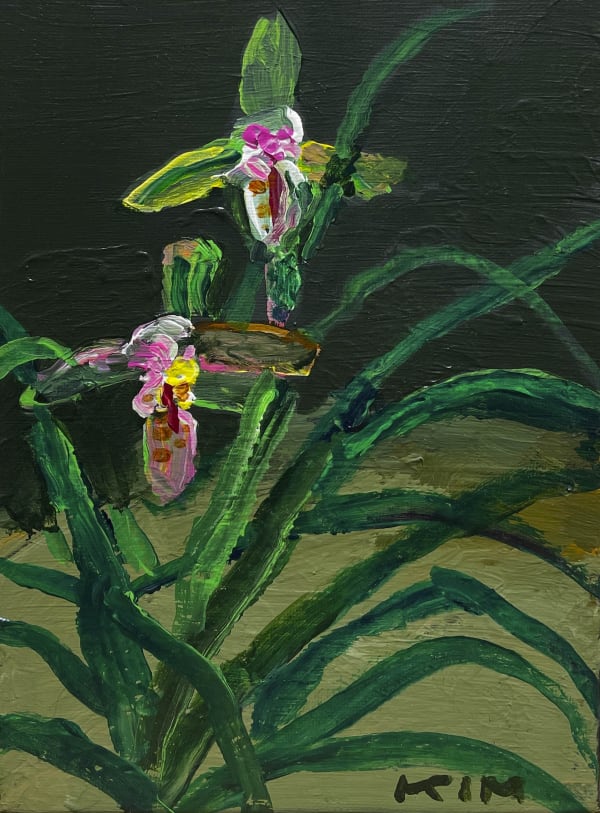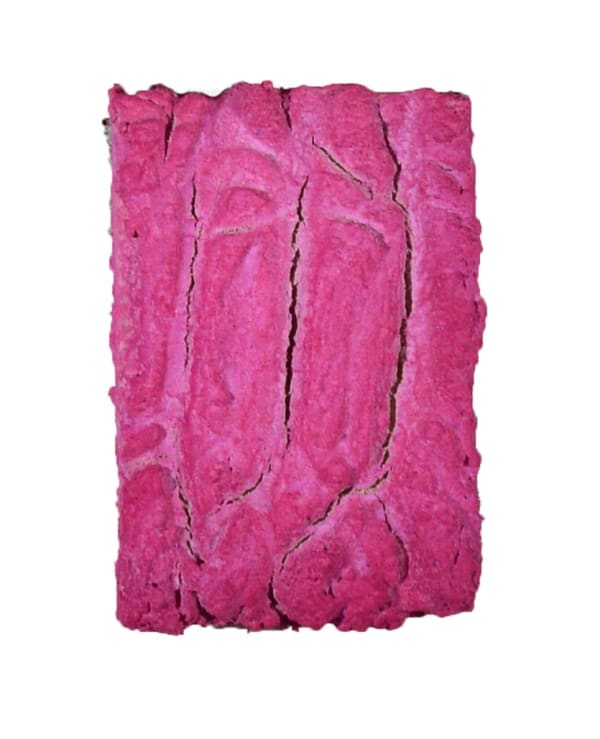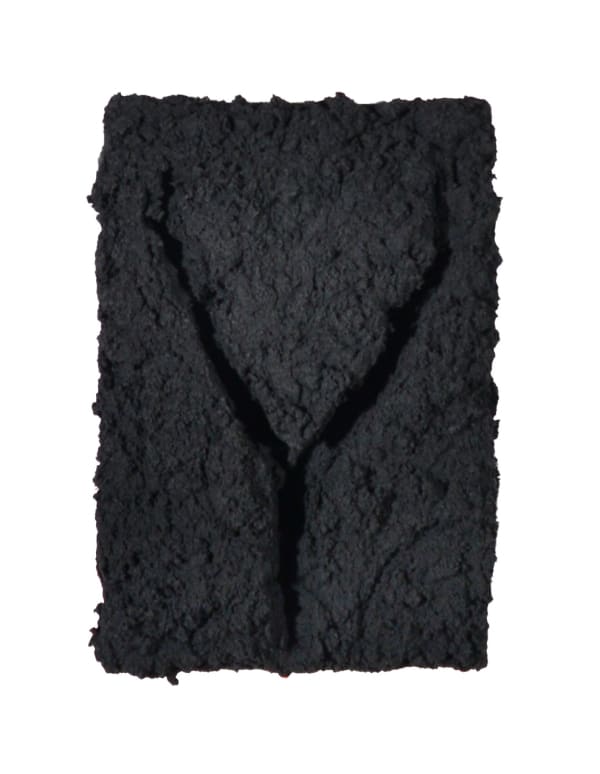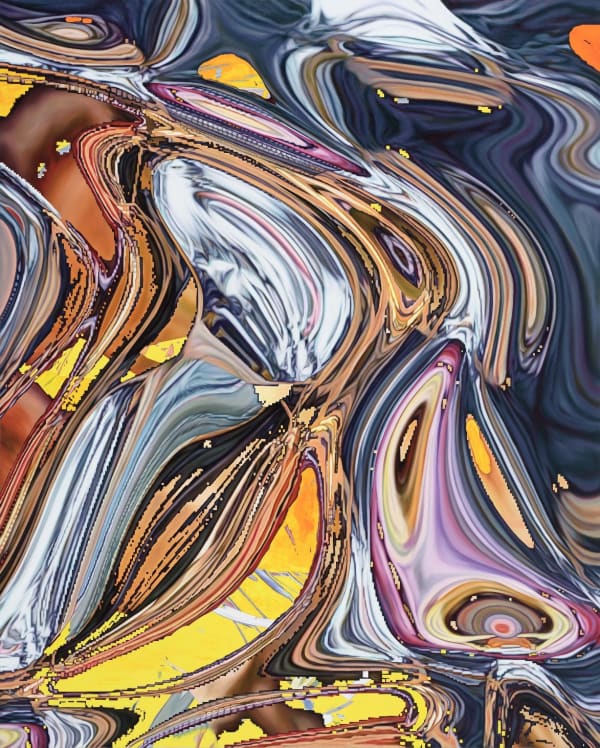-
2025 Art SG
-
Park Seo-Bo (1931 - 2023)
Park Seo-Bo was a seminal figure in Korean contemporary art. He was one of the founding members of the Dansaekhwa movement, which emerged in the early 1970s post-war Korea and has since gained international recognition. In the late 1960s, Park began the ‘Ecriture’ series by repeating pencil lines over wet monochromatic painted surfaces. Later, he expanded the language through the introduction of hanji (traditional Korean paper) and color. The work is brought into being through the process of repetitive actions of pasting, scraping, scratching, and rubbing. It delicately balances drawing and painting in a quest for emptiness through reduction. Park’s work has been exhibited internationally, including: Museum of Fine Art, Boston, United States; the Venice Biennale, Italy; Samsung Museum of Art, Seoul, South Korea; Singapore Art Museum, Singapore; Kunsthalle Wien, Vienna, Austria; Tate Liverpool, United Kingdom; Brooklyn Museum, New York, United States; and Expo 67, Montreal, Canada. Park’s work is included in the collections of the Solomon R. Guggenheim Museum, New York, United States; M+, Hong Kong, China; Guggenheim Abu Dhabi, UAE; The National Museum of Contemporary Art, Seoul, South Korea; and the K20, Kunstsammlung Nordrhein-Westfalen, Düsseldorf, Germany.
Kim Chong Hak (b.1937)
Kim Chong Hak, often referred to as Flower's Painter, is celebrated for his abstract art that emphasizes the inherent beauty of nature. His creative process involves internalizing the joy found in nature and reimagining it onto canvas. In the 1980s, Kim immersed himself in the Seoraksan Mountain, both in theme and living, inspired by its distinct seasonal traits, with a different name for each season. He still speaks fondly of his time in the mountains and his artistic expression of the seasons' colors. His work has been featured in major international exhibitions and projects, including: the Busan Museum of Art, Busan, South Korea; Vitality at Galerie Perrotin, Paris, France; Musée Guimet, Paris, France; SeMA Nam Seoul Living Art Museum, Seoul, South Korea; Whanki Museum, Seoul, South Korea; Ewha Museum, Seoul, South Korea; Kumho Museum, Seoul, South Korea. Kim Chong Hak’s work is in the permanent collections of many museums, including the National Museum of Korea, Seoul, South Korea; National Museum of Modern and Contemporary Art, Gwacheon, South Korea; Leeum, Samsung Museum of Art, Seoul, South Korea; Seoul Museum of Art, Seoul, South Korea; and Busan Museum of Art, Busan, South Korea. Currently, the Kim Chong Hak Museum is in plans to be built in Busan, South Korea, whereas the Architect Kengo Kuma participates as a designer.
Kishio Suga (b.1944)
Kishio Suga is a Japanese artist known for pioneering site-specific installation art. He created ephemeral arrangements of natural and man-made materials in outdoor and indoor settings, gaining recognition for groundbreaking installations like "Parallel Strata" (1969) and "Soft Concrete" (1970). As part of the Mono-ha movement, he used unaltered natural and industrial materials to explore the interplay between elements, space, and materials. Since the mid-1980s, Suga has adapted his installations to new sites while maintaining their core concepts. His diverse practice includes assemblages, works on paper, and performances called "Activations." He is also a prolific writer, with novels, essays, and a screenplay to his name. Suga has had numerous solo exhibitions at international museums, most recently at Dia: Chelsea, New York, United States (2016–17), Pirelli Hangar Bicocca, Milan, Italy (2016), and the Museum of Contemporary Art, Tokyo, Japan (2015). A re-creation of his iconic installation Law of Situation (1971) was presented at the 57th Venice Biennale, Italy (2017). Over the past four decades he has been featured in landmark exhibitions at the Centre Georges Pompidou, Paris, France; the Guggenheim Museum, New York, United States; the San Francisco Museum of Modern Art, San Francisco, United States; the Museum of Modern Art, New York, United States; the Punta della Dogana, Venice, Italy; and his work is included in many public and private collections.
Lee Bae (b. 1956)
Lee Bae focuses on the expressive potential of charcoal as a medium. Over the course of three decades, Lee has dedicated himself to creating a diverse range of iterations of Korean painting through his use of charcoal and abstract forms that are self-sufficient and rich in spiritual and energetic qualities. By exploring immanent notions such as yielding, respiring, and circulation, which are embodied by charcoal as a material, Lee's work resonates with themes of life and death, absence and presence, light and shadow, form, and emptiness. Lee's oeuvre spans a wide range of mediums and forms, from drawings to canvas-based works, as well as installations, with each new work serving to expand upon his unique vision and approach. Lee’s works have been featured at museums and institutions worldwide including: Phi Foundation, Montreal, Canada; Indang Museum, Daegu, South Korea; Wilmotte Foundation, Venice, Italy; Fondation Maeght, Saint-Paul de Vence, France; Musée des Beaux-Arts, Vannes, France; and Musée Guimet, Paris, France. Among many others, Lee’s work is in the permanent collections of museums including the National Museum of Contemporary Art, Gwacheon, South Korea; Seoul Museum of Art, Seoul, South Korea; Leeum-Samsung Museum of Art, Seoul, South Korea; Fondation Maeght, Saint-Paul de Vence, France; Musée Guimet, Paris, France; Baruj Foundation, Barcelona, Spain, and Privada Allegro Foundation, Madrid, Spain.
Jung Kwang Ho (b.1959)
Jung Kwang Ho, who aims to weave between painting and sculpture, desires to explore the essence and interpretation of sculpture in particular. A sculpture is a tangible representation of an image manifested by the sculptor using materials, techniques, and tools to create a specific object in a particular way. Jung oxymoronically refers to his works as "non-sculptural sculptures," as he works with non-sculptural properties to create essentially sculptural works. The paradoxical expression is part of how he explores the essence of sculpture. The artist made no distinction between inside and outside, instead exposing the surface and penetrating through to suggest that surfaces are merely the superficial layer of sculptural essence and the surface of reality. Jung presented solo exhibitions in various museums worldwide, including the Stedelijk Museum, Amsterdam, Netherlands, Art Sonje Museum, Gyeongju, South Korea, Kumho Art Museum, Seoul, South Korea, Gallery Thomas, Munich, Germany, Lumen Gallery, Paris, France, and Canvas International Art Gallery, Amsterdam, Netherlands. He also participated in significant group exhibitions at institutions such as the Seoul Museum of Art, Seoul, South Korea, Samsung Museum of Art Leeum, Seoul, South Korea, Singapore Art Museum, Singapore, and Gyeonggi Museum of Art, Ansan, South Korea. His works are held in various collections, including the National Museum of Modern and Contemporary Art, Seoul, South Korea, Daejeon Museum of Art, Daejeon, South Korea, Hanlim Museum of Art, Daejeon, South Korea, Sonje Museum of Contemporary Art, Gyeongju, South Korea, and Ho-Am Art Museum, Seoul, South Korea.
Lee Kwang Ho (b. 1967)
Lee Kwang Ho is a representative figure in realism paintings. He takes daily subject matters and takes the reproduction of their forms into a unique language of his own. Although realism seems like quite a laborious task and sometimes compulsive as well, through the pictorial depiction of Lee Kwang Ho, we see the reconstructed reality fabricated by his intentions. Subjects that are expressed both vigorously and dramatically expose the desires of their subconscious, and also stimulates the tactility of those that behold them. In his wetland series, he experiments with techniques like scratching and tapping on the canvas. Upon closer inspection, the depicted subjects dissolve, leaving behind a layer of paint with precise brushstrokes and meticulous knife work, which emphasizes the exploration of the fundamental question of painting - the act of painting itself. Lee has held solo exhibitions in various venues, including Johyun Gallery, Busan, South Korea; Kukje Gallery, Seoul, South Korea; and Chang dong Studio Gallery, Seoul, South Korea; and has participated in group exhibitions at Seoul Museum of Art, Seoul, South Korea; Busan Museum of Art, Busan, South Korea; Gana Art Center, Seoul, South Korea; and Saatchi Gallery, London, United Kingdom. His works are included in prestigious collections such as the National Museum of Modern and Contemporary Art, Seoul, South Korea; the Seoul Museum of Art, Seoul, South Korea; the Gyeonggi Museum of Art, Ansan, South Korea, and the Jeju Museum of Art, South Korea.
Bosco Sodi (b. 1970)
Bosco Sodi is an artist working globally, known for his densely textured paintings and objects with rich and vivid colors. His paintings are crystallized forms of arduous physical application; a constant cultivation of removing any hint of his own intent in the painting and populating the surface with the essence of material and fortuitous development. The artist works with the canvas laid down horizontally, applying a viscous mixture of soil, sawdust, glue and pigment to aggregate and then left to solidify over time. This process is a performance of sorts. That performance may last up to several months, with each accumulated strata of material testimony to the artist’s actions. Eventually, in that process, the layers cleft, and that is when the performance ends. From then on, all is left to time and nature’s forces. Cracks appear naturally on the surface and traces of material transforming from the material to the substrate to the whole of the artwork - a strikingly formal experiment in painting. Sodi’s works are included in various public and private collections, such as Ishikawa Prefectural Museum of Art, Kanazawa, Japan; Harvard Art Museums, MA, United States; Museum of Contemporary Art, Antwerp, Belgium; Museum Voorlinden, Wassenaar, Netherlands; and the National Gallery of Victoria, Melbourne, Australia.
Lee So Yeun (b.1971)
Lee So Yeun's self-portraits, reminiscent of identification photos, vividly depict snapshots of her life's journey and the epochs she has navigated. Depicted with bold forms and luminous hues, the objects laden with multiple meanings evoke a subtle theatrical atmosphere and an unusual intimacy. It weaves together elements of similarity and contrast, delicately balancing between closeness and estrangement. Lee So Yeun majored in fine art in South Korea and continued her studies at the Münster Kunst Academy in Germany. Her nomination for Düsseldorf's "Emprise Art Prize" catalysed her recognition within the German art sector. By 2005, she earned the "Young Artist Award" from the Columbus Art Foundation in Ravensburg, Germany. From 2006, she collaborated exclusively with Düsseldorf's esteemed Conrad Gallery, achieving international acclaim at renowned art fairs including the Cologne Art Colony in Germany, Show Off in Paris, France, ARCO in Madrid, Spain, and Scope and Pulse Art Fairs in New York, United States. She has showcased solo exhibitions at Kunsthaus Essen, Germany (2014), Johyun Gallery, South Korea (2014), and Space K, South Korea (2013). She also participated in notable group exhibitions at the Gyeonggi Museum of Modern Art, South Korea (2018), Sejong Centre, South Korea (2017), Amway Museum, South Korea (2016), Pohang Museum of Steel Art, South Korea (2015), and Gallery Lux, South Korea (2015). Currently, her works are part of collections at TCB collection in Japan, Achenbach Art Consulting in Germany, the Columbus Foundation, and t.VIS.t Communication in Madrid, Spain.
Jin Meyerson (b.1972)
Jin Meyerson, is recognized for his contributions to the revival of figurative painting in the early 2000’s in NYC where he began his career. A pioneer of early randomization CG systems in concert with painting, his work bridges figuration and abstraction by engaging with issues of displacement, loss of heritage, post-colonialism, and the expansive Korean diaspora. His recent work employ LIDR scans, AR overlays and ideas of retro causality, as source and origin on his longstanding investigation of meaning and contemporaneity in painting. His paintings have been featured in extensive solo and group exhibitions globally, including: The 2022 Venice Biennale, Italy; Gallery2 + Johyun Gallery, Seoul + Busan, South Korea; M Woods Museum, Beijing, China; Zach Feuer Gallery, NYC, United States; Galerie Emmanuel Perrotin, Paris, France, and Hong Kong, China; The Saatchi Gallery, London, United Kingdom; Galerie Nordine Zidoun, Luxembourg; Arario Gallery, Seoul and Cheonan, South Korea; Hakgojae Gallery, Seoul, South Korea, and Shanghai, China; and Pearl Lam Gallery, Hong Kong, China. His work can be found in numerous public and private collections, including: the Solomon R. Guggenheim Museum, NYC, United States; The Saatchi Collection, London, United Kingdom; Vanhaerents Art Collection, Brussels, Belgium; Dean Valentine Collection, LA, United States; the de la Cruz Collection, Miami, United States; the Speyer Family Collection, NYC, United States; the Yuz Foundation, Jakarta, Indonesia, and Shanghai, China; the Taguchi Art Collection, Tokyo, Japan; MACAN Museum, Jakarta, Indonesia; and the Sansab Museum, Bangkok, Thailand.
Jo Jong Sung (b.1977)
Jo Jong Sung uniquely employs traditional Korean paper and ink to craft landscapes that merge multiple viewpoints. He reimagines traditional landscapes by collaging fragments, creating compositions both familiar and refreshingly novel. This approach enables diverse angles of the inherent shifting perspectives in landscape to coexist within a single frame, offering a fresh reinterpretation of the genre that is both recognizable and unfamiliar. The intricately crafted hidden viewpoints dynamically captivate the viewer, igniting their imagination and perceptual reactions, motivating them to become actively engaged. Born in Busan, South Korea, Jo graduated from Dong-A University in 2003. Acclaimed as a Kumho Young Artist in 2007, his prominence grew with exhibitions at venues like Johyun Gallery, Saum Art Space, and Tokyo's SH Art Project. 2021 marks his return to Johyun Gallery for another solo showcase. His involvement with the Jeollanam-do International Wood Biennale, South Korea, began in 2017. He has been spotlighted in group exhibitions at major institutions, including Busan Museum of Art, Busan, South Korea, and Kumho Museum of Art, Seoul, South Korea. His international recognition soared after a feature in a 2015 Christie's Hong Kong auction. By 2019, he exhibited alongside luminaries like Kim Whanki and Park Seo-Bo at Hong Kong's Christie's Gallery, China. His works are proudly housed in collections such as the KEB Hana Bank, Seoul, South Korea, Museum of Contemporary Art, Seoul, South Korea, Seoul Museum of Art, Seoul, South Korea, and Kumho Museum of Art, Seoul, South Korea.
Kang Kang Hoon (b. 1979)
Kang Kang Hoon's portrait series not only captures external features but also delves into the deeper emotional essence of each subject, inviting viewers to confront their true selves. His daughter, a recurring motif, serves as both the focal point of the artwork and a reflection of Kang himself. In a recent oil painting series, Kang incorporates symbolic object cotton, inspired by a yearning for his recently deceased mother. The contrast between withered branches and bloomed cotton subtly conflicts and harmonizes, contemplating intergenerational connections. Employing cotton as a metaphor for the enduring connections within humanity, Kang explores broad themes of the past and future on the delicate realm between figuration and abstraction.Major exhibitions featuring his works include the Jeju Museum of Art, Jeju, South Korea; Wooyang Museum of Contemporary Art, Gyeongju, South Korea; Clayarch Gimhae Museum, Gimhae, South Korea; Gyeonggi Provincial Museum, Ansan, South Korea; Jeju Museum of Contemporary Art, Jeju, South Korea; Gyeongnam Art Museum, Changwon, South Korea; and Seoul Museum of Art, Seoul, South Korea. His works are in the collection of the National Museum of Modern and Contemporary Art. He has been featured and sold out at numerous art fairs worldwide, including Hong Kong, China, Singapore, and Shanghai, China, and he continues to remain active internationally as one of the most recognizable, leading artists in Korean contemporary art today.
-
Park Seo-Bo
-
Kim Chong Hak
-
Kishio Suga
-
Lee Bae
-

Lee Bae
Brushstroke S-1, 2022
Bronze
183 x 193 x 143 cm
Edition of 3$100,000 USD
-

Lee Bae
Brushstroke sculpture, 2024
Bronze
73 x 52 x 63 cm
AP of 2$30,000 USD
-

Lee Bae
Issu de feu K-20, 2003
Charcoal on Canvas
162 x 130 cm$180,000 USD
-

Lee Bae
Acrylic medium, 2019
Acrylic Medium, Charcoal Black on Canvas
117 × 82cm$48,000 USD
-

Lee Bae
Brushstroke D1, 2024
Charcoal Ink on Paper
162 x 130 cm$60,000 USD
-

Lee Bae
Brushstroke D16, 2024
Charcoal Ink on Paper
162 x 130 cm$60,000 USD
-

Lee Bae
Brushstroke D35, 2024
Charcoal Ink on Paper
162 x 130 cm$60,000 USD
-

Lee Bae
Brushstroke-11h, 2023
Charcoal Ink on Paper
102 x 66 cm$36,000 USD
-

Lee Bae
Brushstroke EA-2, 2019
Charcoal Ink on Paper
102 x 66 cm$36,000 USD
-

Lee Bae
Brushstroke de-23, 2020
Black Water Colors on Paper
42 x 29.7 cm$12,000 USD
-

Lee Bae
Brushstroke de-21, 2020
Black Water Colors on Paper
42 x 29.7 cm$12,000 USD
-
-
Jung Kwang Ho
-
Lee Kwang Ho
-
Bosco Sodi
-
Lee So Yeun
-
Jin Meyerson
-
Jo Jong Sung
-

Jo Jong Sung
Landscape seen from a moving perspective, 2023
Pigment on Korean paper
91 x 117 cm$12,000 USD
-

Jo Jong Sung
Cloud Landscape, 2021
Pigment on Korean paper
35.7 × 35.7 cm$4,000 USD
-

Jo Jong Sung
Cloud Landscape, 2021
Pigment on Korean paper
35.7 × 35.7 cm$4,000 USD
-

Jo Jong Sung
Cloud Landscape, 2020
Pigment on Korean paper
31 x 44.2 cm$4,000 USD
-

Jo Jong Sung
Cloud Landscape, 2021
Pigment on Korean paper
31.2 x 44.2 cm$4,000 USD
-
-
Kang Kang Hoon
[2025 Art SG]
Past viewing_room











































